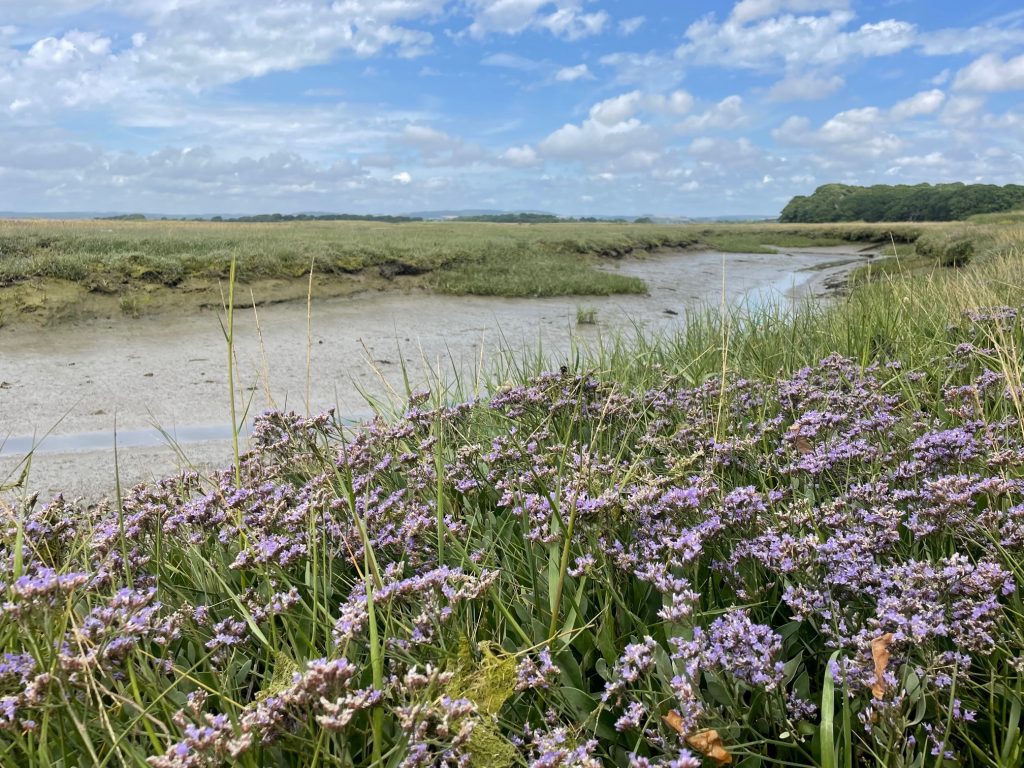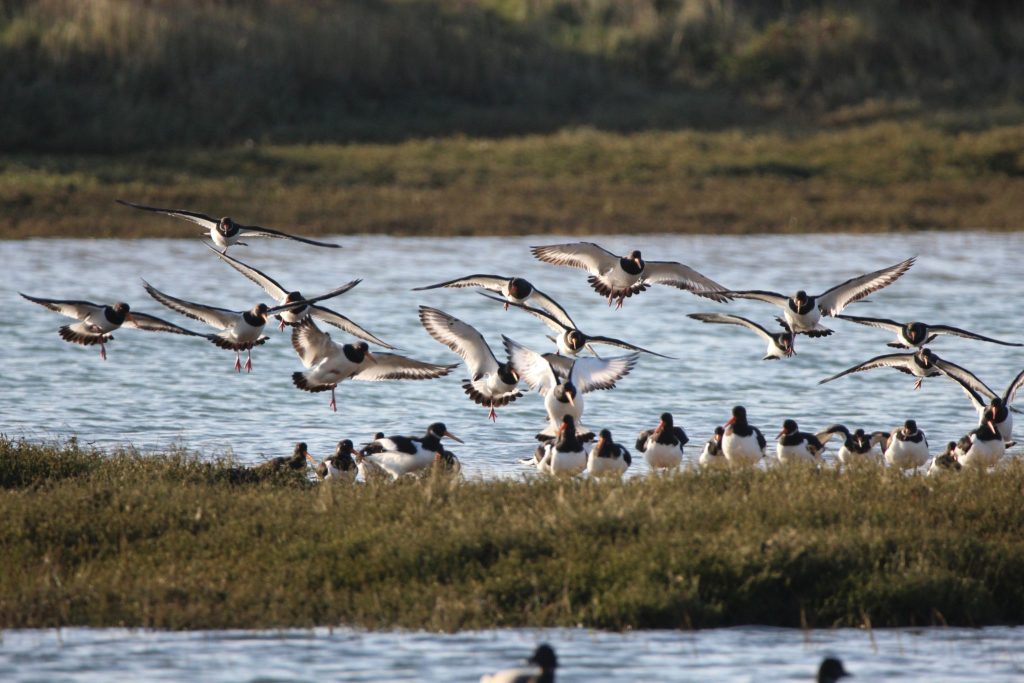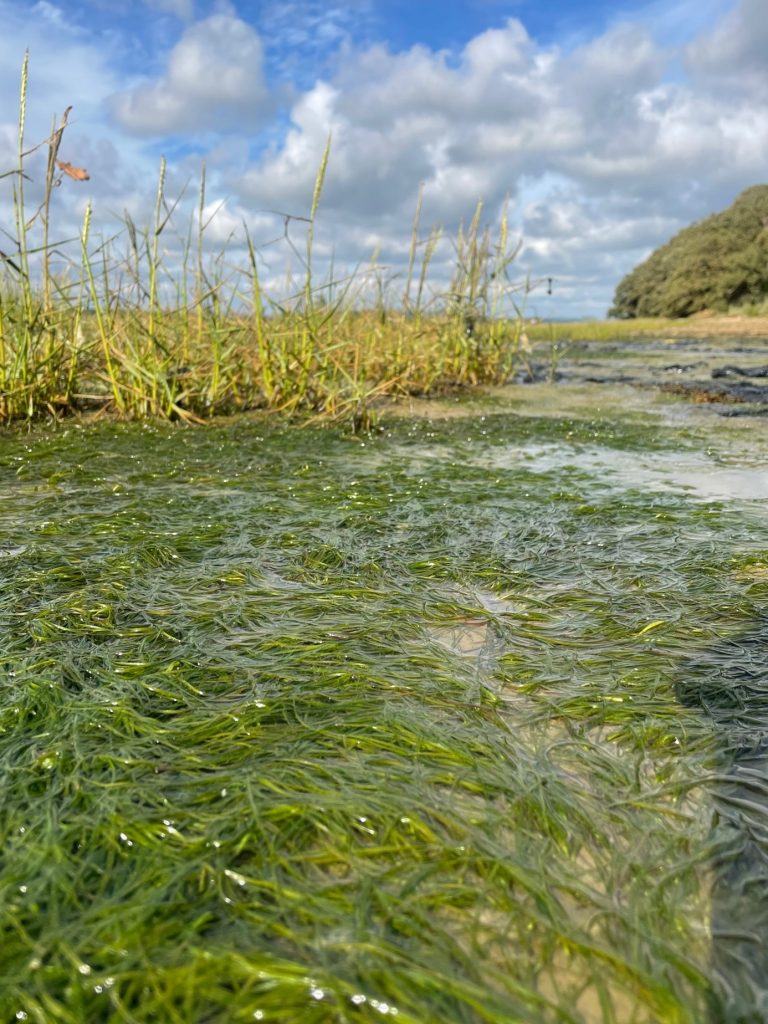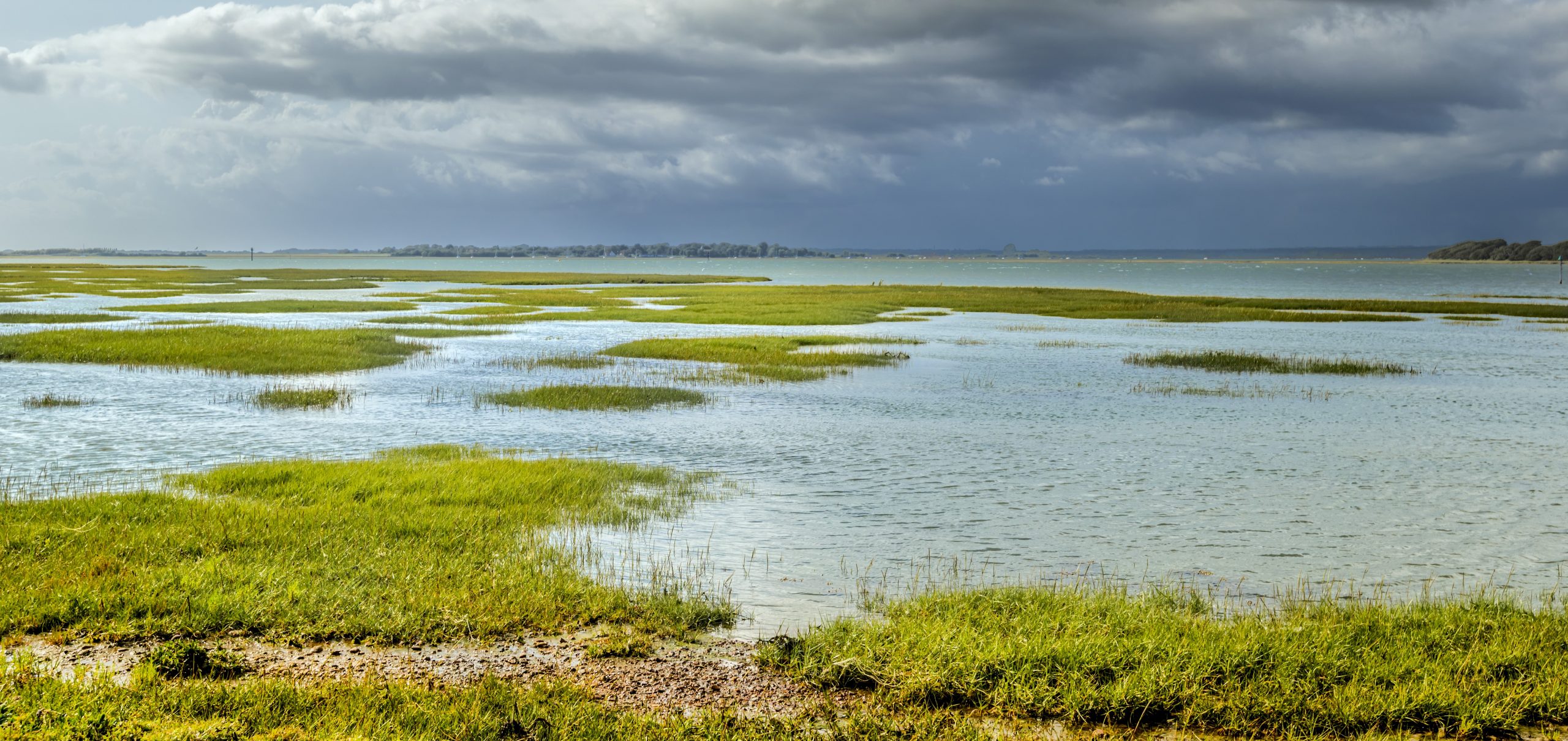We know that saltmarshes have a valuable role in reducing flood and coastal erosion risk, along with mudflats, seagrass meadows and oyster reefs. Last week the Environment Agency updated the “Working with Natural Processes Evidence Directory” summarising the latest evidence in favour of natural flood management and highlighting the importance of saltmarsh for flood and coastal defence.
Informed by scientific evidence from over 700 scientific papers, the directory includes a section on coastal and estuary management which is particularly relevant to Chichester Harbour. Protecting and restoring our coastal habitats is a key part of our work at Chichester Harbour Conservancy, this updated evidence base underscores an important benefit of the habitats to coastal communities in the form of flood and coastal defence.

How do saltmarshes reduce flood and coastal erosion?
- Saltmarshes reduce wave and tidal energy, with vegetation further dampening wave energy.
- Saltmarshes reduce the forces affecting flood defences, extending the life of sea defences.
- Saltmarshes reduce tidal and storm surges, leading to lower water levels at sea defences.
Other benefits of saltmarsh:
The directory also points to multiple other benefits that saltmarshes bring, including:
- Improving water quality.
- Storing large amounts of carbon making them important in mitigating climate change.
- Boosting biodiversity, supporting terrestrial and marine species from young fish and marine invertebrates to insects, plant and bird life.
- Amenity – the effect of saltmarsh on wellbeing and people’s enjoyment of the coastline.


How do Chichester Harbour’s other coastal habitats reduce flood and coastal erosion risk?
- Mudflats offer coastal protection by reducing wave energy.
- Oyster reefs act as a natural breakwater, reducing wave energy. Although there are currently no oyster reefs within Chichester Harbour, there are plans through the Solent Seascape Project to restore an oyster reef later this year.
- Seagrass meadows and other submerged aquatic vegetation reduce wave energy in shallow areas.
- Seagrass meadows also trap sediment, helping stabilise the seabed.
Natural flood management – harnessing the benefits
We know that Chichester Harbour’s saltmarsh has suffered a dramatic decline since 1946, but through our nature recovery partnership, we are working to protect and restore this and other precious coastal habitats. By making space for saltmarsh and using innovative new techniques, we aim to return the harbour to a thriving and connected ecosystem with a healthy patchwork of coastal habitats including saltmarsh, seagrass meadows, mudflats and oyster reefs. This updated evidence base from the Environment Agency shows just how important that is in protecting coastal communities from the pressures of climate change a sea level rise.
